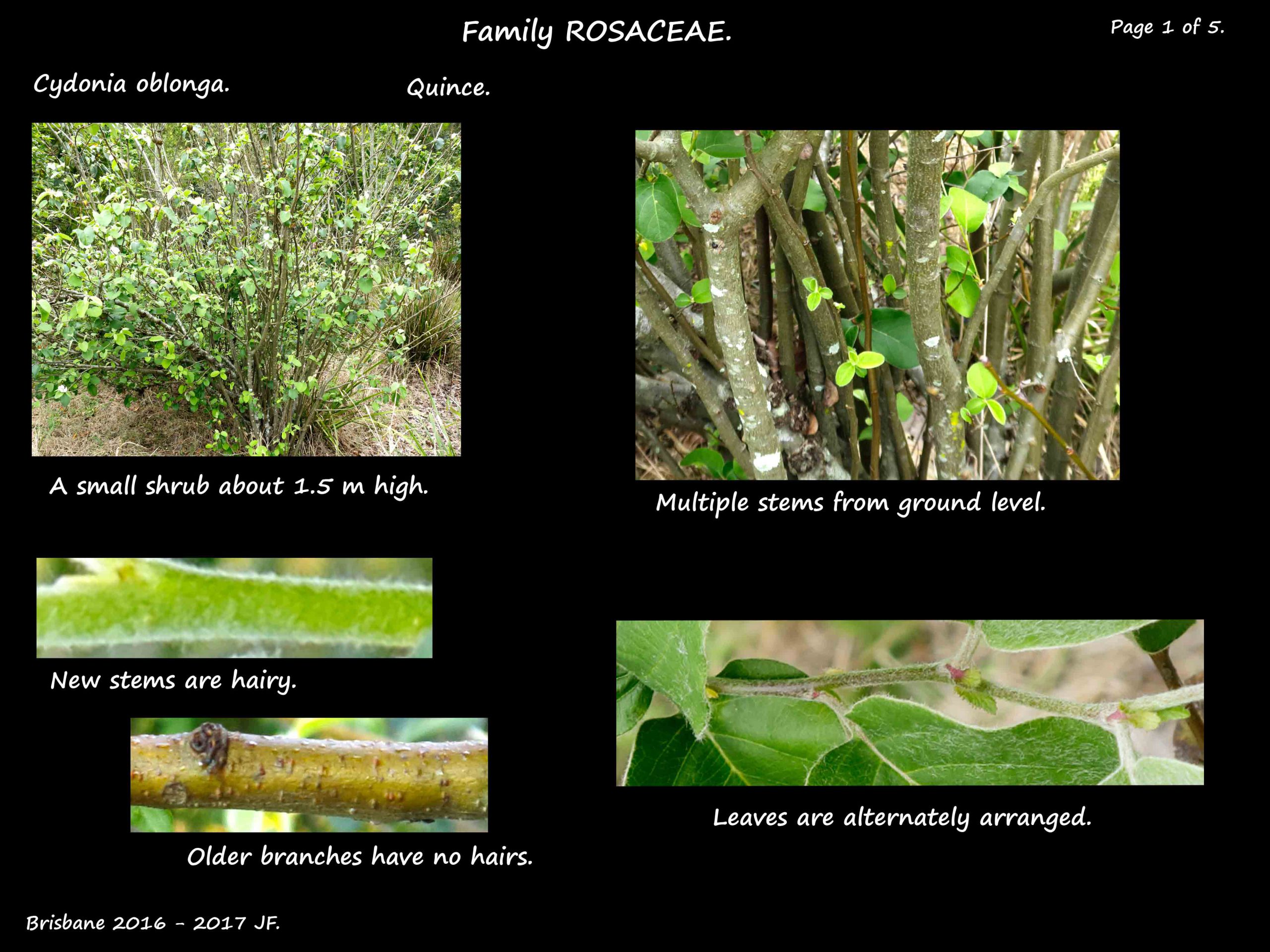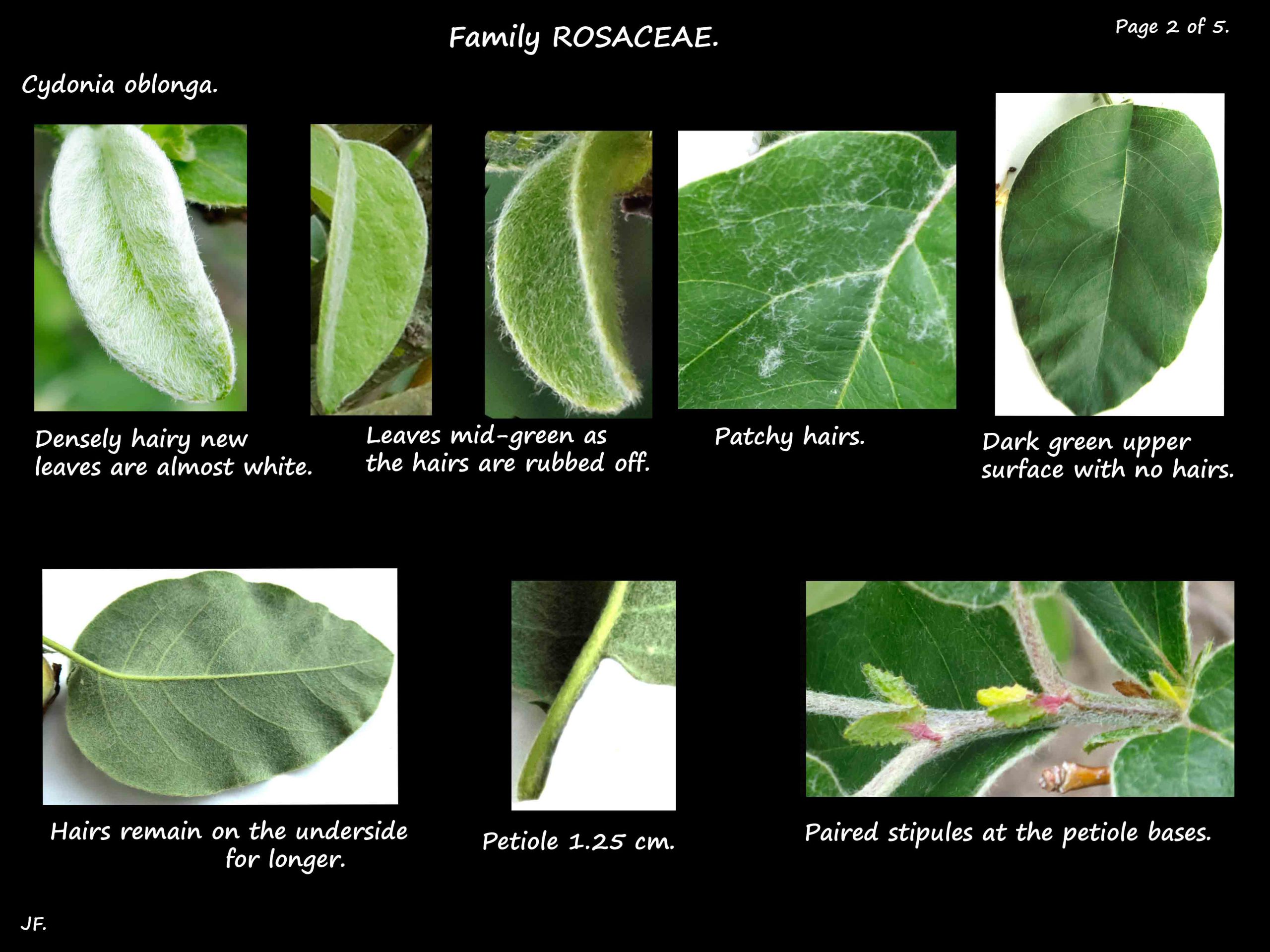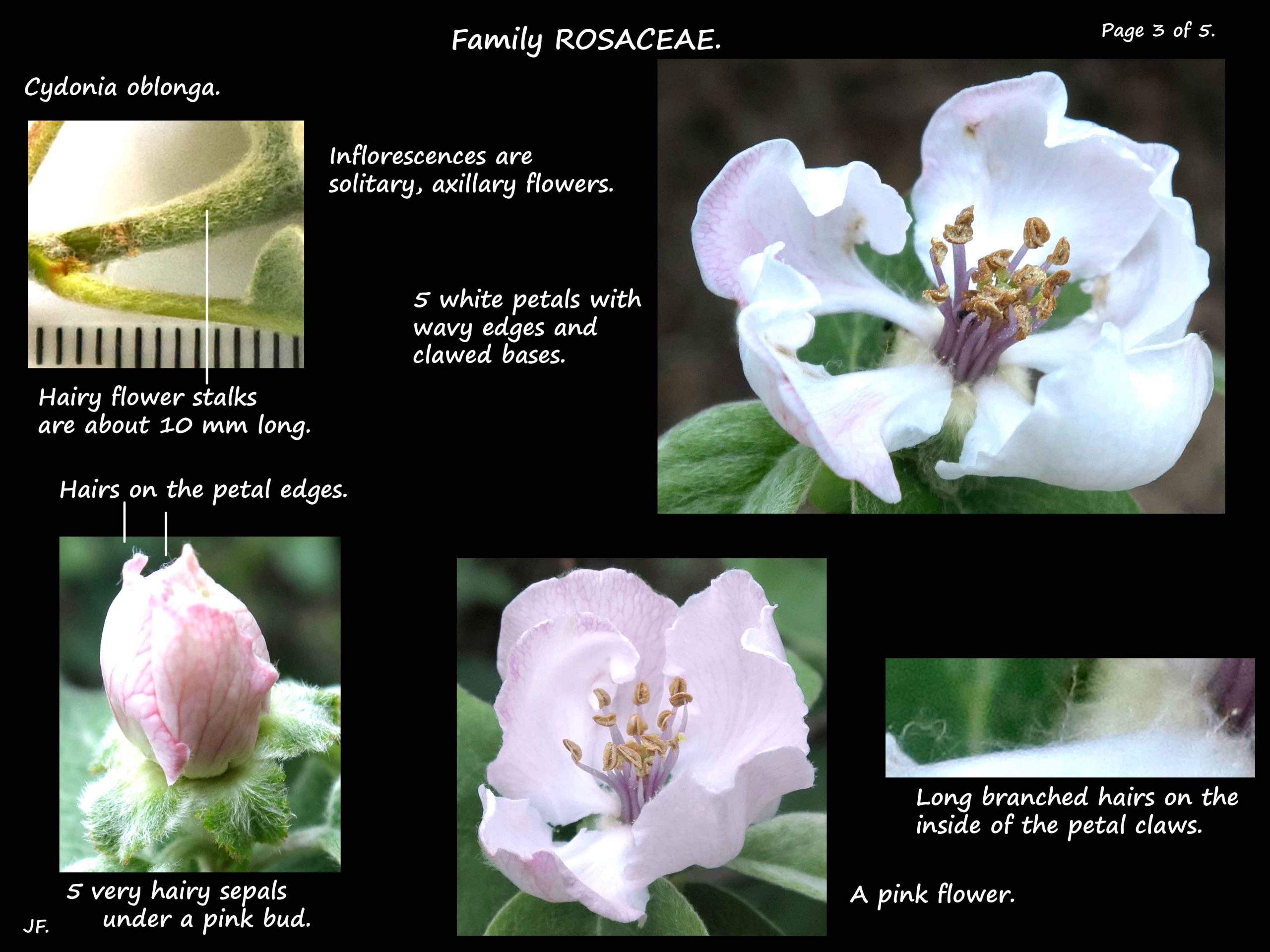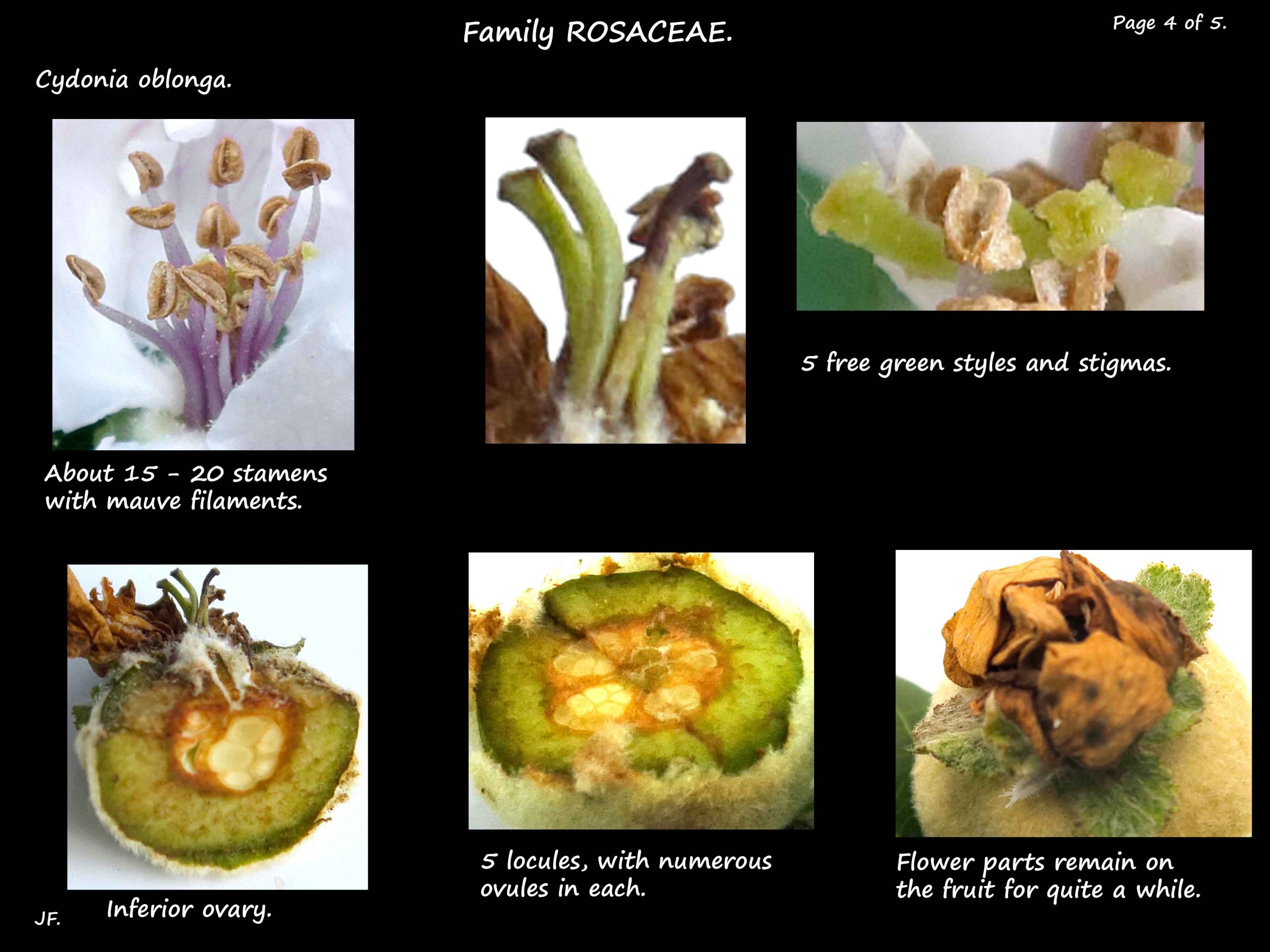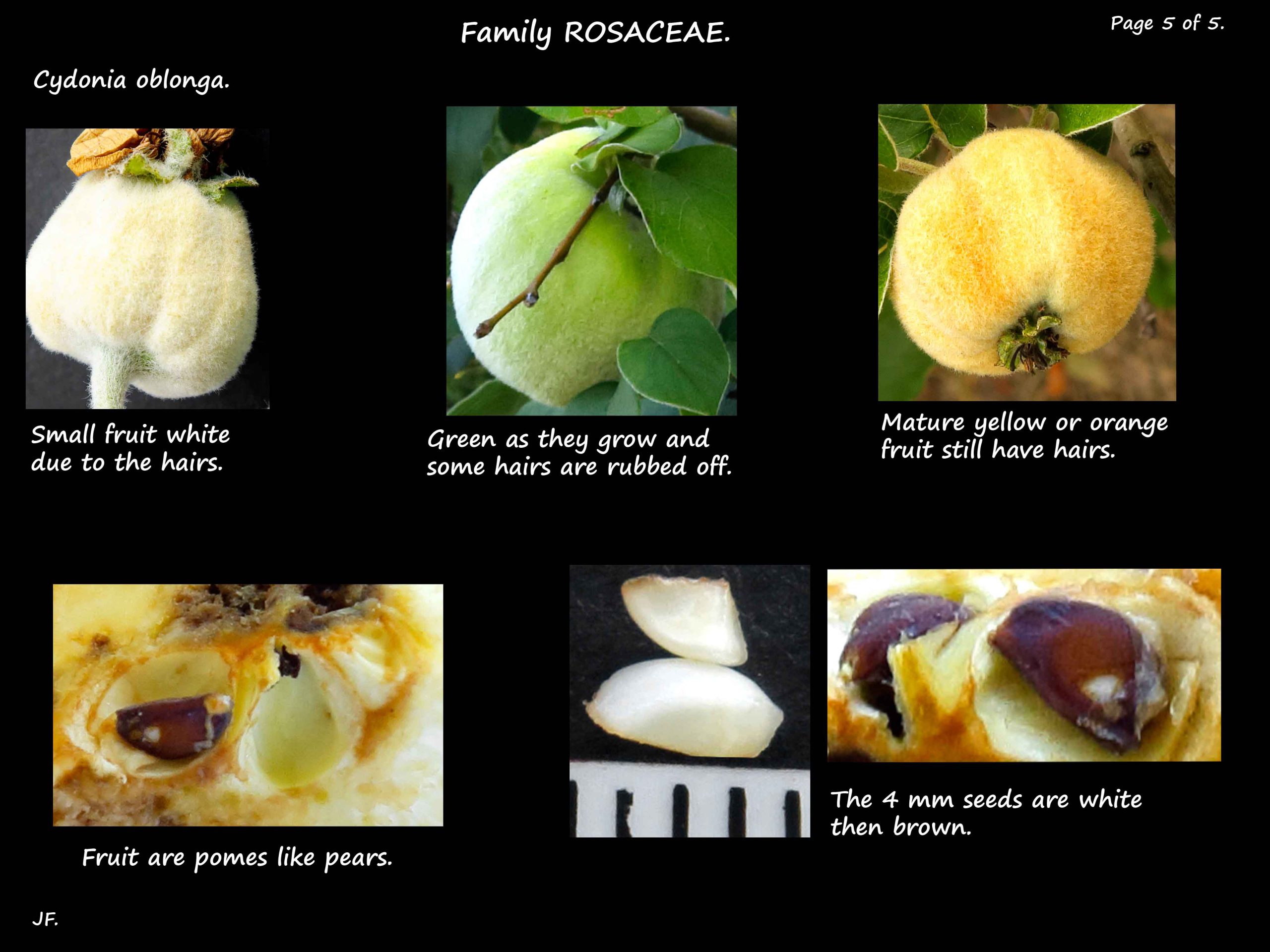Cydonia oblonga – Quince.
Family Rosaceae > Subfamily Amygdaloideae > Tribe Maleae > Subtribe Malinae.
Known as the Common Quince it is the only species in the genus.
It is a deciduous plant growing up to about 5 m.
It can be described as a shrub or a small tree with multiple stems.
The simple, alternately arranged leaves are up to 11 cm long.
On petioles, they are broadly ovate and densely covered with white hairs.
The hairs wear off with age especially on the upper surface.
There are hairs on the new growth stems but not older branches.
There is a pair of stipules at the base of the petioles.
Inflorescences are solitary flowers in the leaf axils.
They are up to 5 cm across and on very short stalks.
There are 5, very hairy and separate sepals.
The 5 petals alternate with the sepals.
They have narrow (clawed) bases and wavy edges.
Colours are white, pink or white with pink veins.
They have short, fine, white hairs on the margins and the claws.
The flower parts often remain on the fruit.
There are numerous free stamens with mauve filaments.
Anthers open inwards via longitudinal slits.
The inferior, densely hairy ovary has 5 locules each with numerous ovules.
There are 5 free, green styles and stigmas.
The fruit, similar to apples and pears, are pomes.
They are globular to pear-shaped and up to 12 cm long by 9 cm wide.
The dense covering of white hairs mostly wears off.
They mature slowly from green to yellow or orange.
The hard, yellow flesh has a central core with white then brown seeds.
Too sour for a fresh fruit they are cultivated for cooking.
There are a few cultivars.
J.F.
